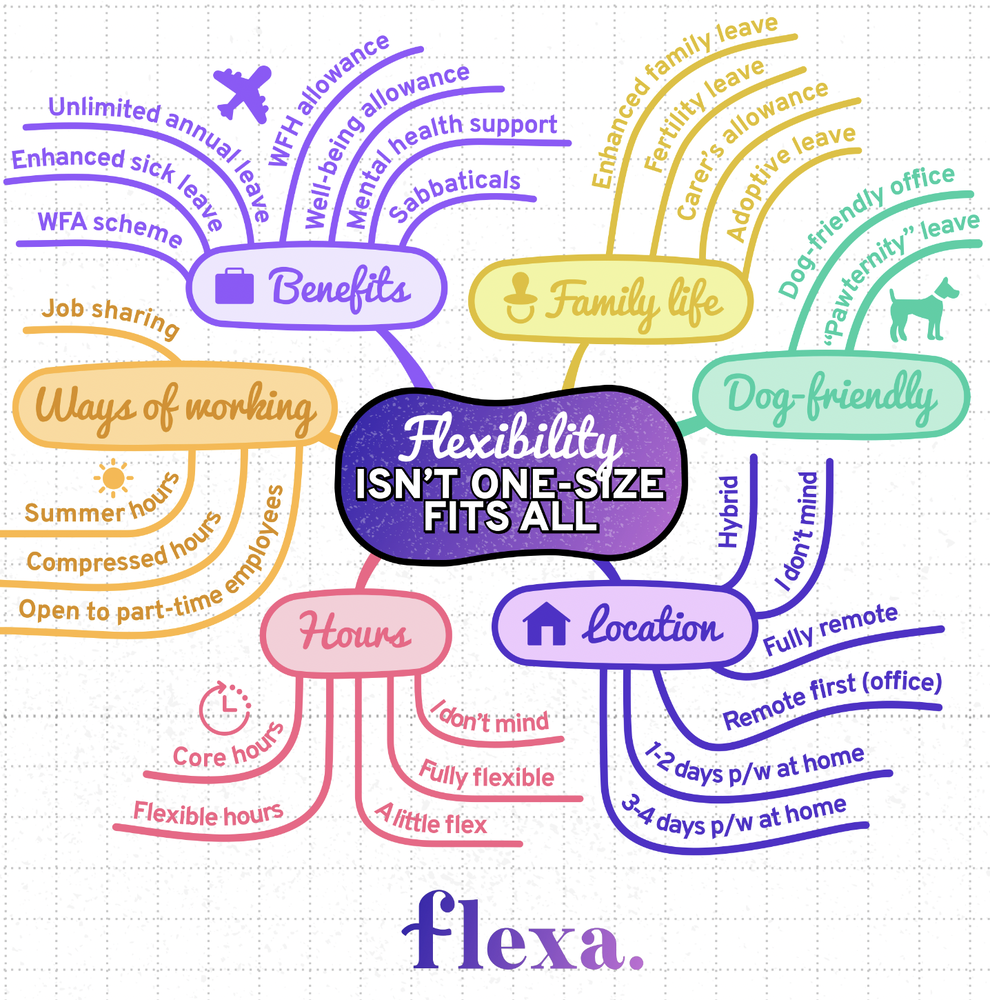Why is flexible working a feminist issue?
Research shows that if women can work flexibly, then they are twice as likely to remain in the workforce post-pregnancy.
2nd Apr 2024

Why is flexible working a feminist issue?
Because without flexible working, we cannot have a gender equal world.
Research shows that if women can work flexibly, then they are twice as likely to remain in the workforce post-pregnancy and are also twice as likely to excel in their career if their husband or partner supports them with childcare.
Women carry more household duties (with or without children), we bear the lion’s share of childcare, spend more time getting ready for work because of social pressure, put up with more sexual harassment and microaggressions at work, we have painful periods, we go through the menopause, and so many other things… Flexible working makes these more manageable and enables us to still have a successful career alongside juggling these things!
In addition, flexible working, when culturally normalised, also means that men can take a greater burden of the household duties and childcare.
Not only is flexible working good for women, it’s also good for men who want to help women.
As Anthony Klotz said: "It’s not the silver bullet (there isn’t one), but I’d call it a gender-equity facilitating policy."
However, men are returning to work at a much faster rate than women, which creates an issue when it comes to recognition and progression, as presenteeism is still seen as a reliable indicator for performance.
This means that women who want to progress at the same rate as their male counterparts will have to survive in rigid environments.
And those who literally cannot manage work and life without flexible working will have to leave the workforce. Given that a study from McKinsey & Company found that if we fully utilise women in the UK by 2030, we will add £150 billion to our economy. This translates to almost a 7% jump in GDP.
Yet, we are still not getting it. Our data at Flexa shows that only 40% of companies are truly flexible. This is down from 50% immediately post-pandemic, and it’s continuing to decline.
But flexible working is not JUST a feminist issue
Flexible working is more inclusive working. Not just for women, but for people with disabilities, people of colour, neurodivergent individuals, people with disabilities, people with caring responsibilities, LGBTQIA+ individuals, people with mental health considerations, and people with chronic conditions.
How can we use flexible working to improve gender equality in the workplace?
Offer flexible working of some form.
Flexible working can be any number of things, from hybrid three days a week in the office through to fully remote. From a bit of flex on hours through to fully asynch. From a dog-friendly office, through to amazing enhanced parental leave. Flexible working is different for everyone, but what’s for sure, is that it’s all about a level of choice within boundaries that work for both the company and the individual.

Normalise flexible working for everyone.
If you support and encourage flexible working, you are going to create a working environment in which people can thrive. If you tolerate or allow it, you will create a working environment in which some people can survive, but it will create an “othering” effect, where people have to justify the need for flexible working, and feel as if they are working in a different way to the norm.
This often results in a very unequal working environment, as those who work with the cultural norms are more likely to be rewarded.
Your company’s version of flexible working needs to be for all, regardless of whether it’s needed or just wanted. Men need to be encouraged to work flexibly in order to create an environment where flexible working is normalised and fair.
Be transparent about your employer value proposition.
While we do not have the right to demand our own version of flexible working, we do have the right to choose which company we work for.
You working environment should not suit literally everyone. Different people want different things. Being transparent about what’s on offer is essential to creating an inclusive hiring process.
By being transparent, you empower people to make an educated decision about whether your company is right for them. By not showcasing this information, you are disenfranchising them, and forcing them to apply to a role that may not be the right fit for them.
Put your EVP everywhere for people to see it. It’s crucial to building an inclusive hiring process, and we know this because Amplifi (Europe) increased the diversity in their pipeline by 65% through Flexa. Check out the case study here.